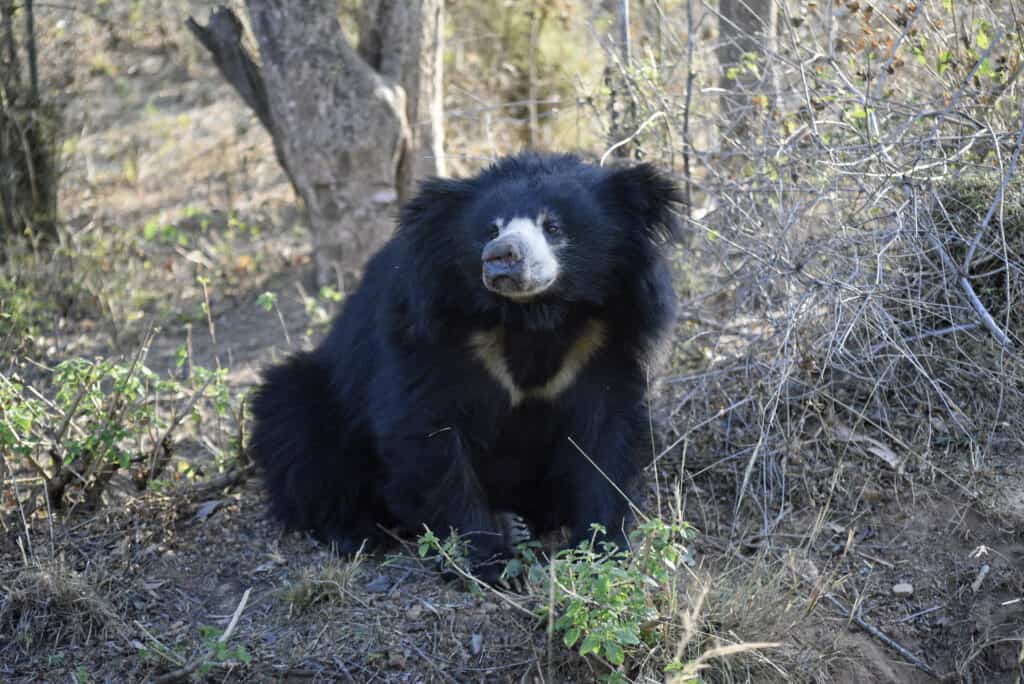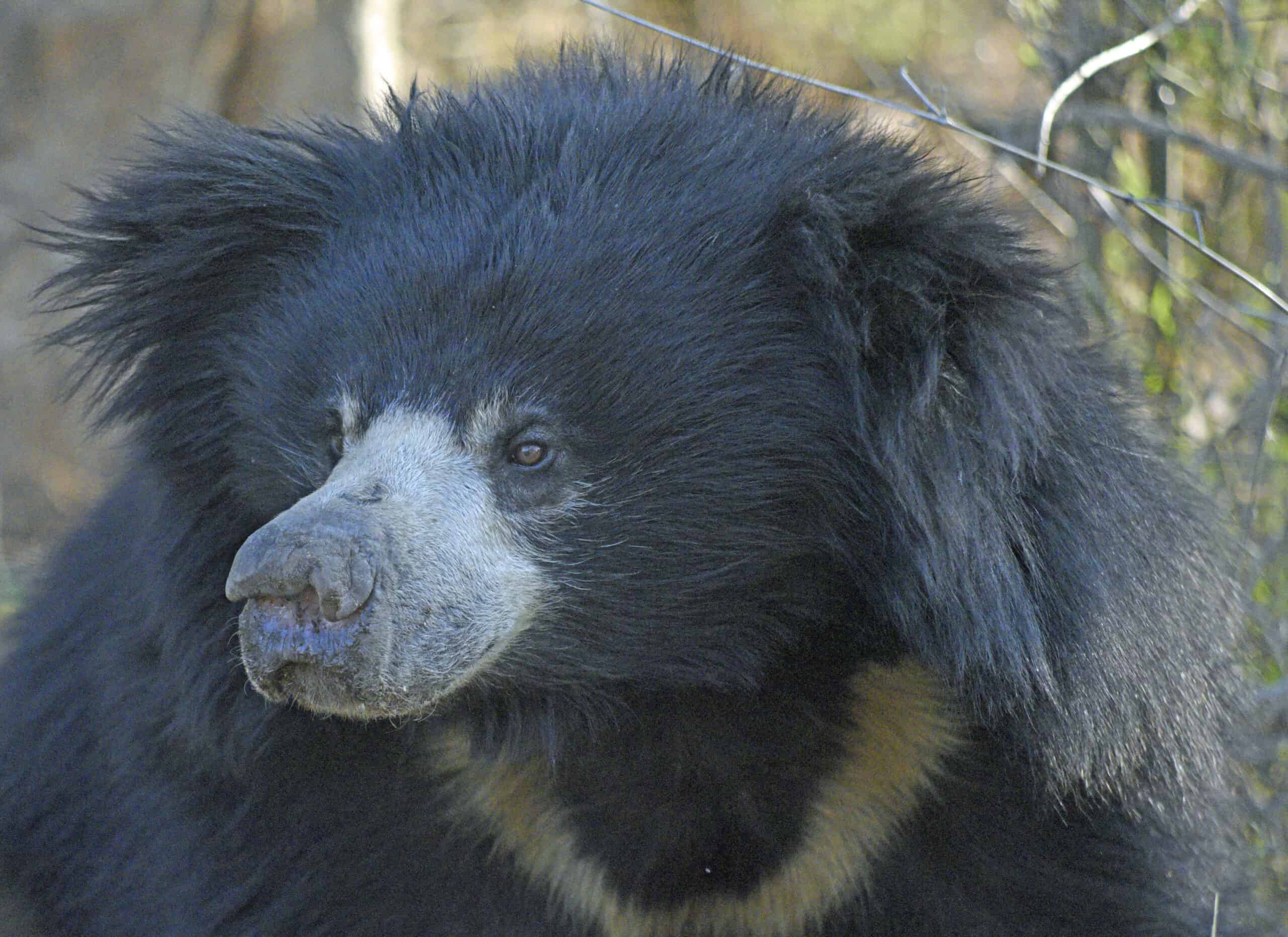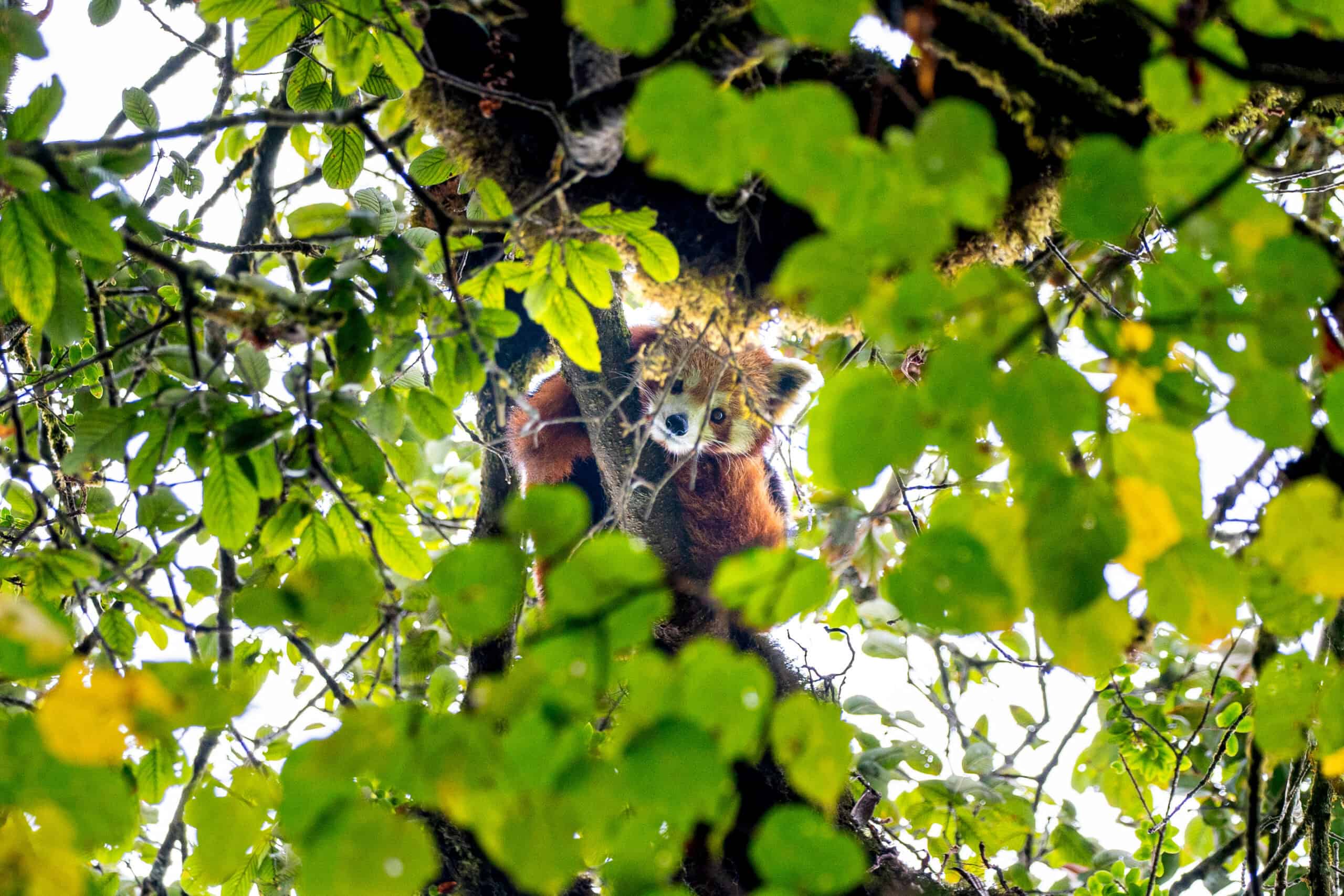Share this article
Wildlife Featured in this article
- sloth bears
- tigers
- leopards
- crested porcupines
- rusty-spotted cats
- jungle cats
Wild Cam: Where do sloth bears den?
Female sloth bears may sometimes take risks to gain access to better resources
For centuries, the dance industry was one of the biggest threats to sloth bears in India. But it had nothing to do with the waltz or two-step.
After poachers killed cubs’ mothers in the wild, practitioners would bring the cubs into captivity and force them to perform. The trainers would poke a hole in the bear’s nose and run a rope through it to coax the animal into dancing for spectators. The practice goes back at least 400 years into the Mughal era of India. The practice was made illegal decades ago in India, but there were still plenty of dancing bears until Wildlife SOS, an Indian-based nonprofit group, worked to rehabilitate hundreds of the working bears. The last known one was taken off the streets in 2009.
While some dancing bears were Asiatic black bears (Ursus thibetanus), the trade in India targeted sloth bears (Melursus ursinus), listed as vulnerable by the International Union for Conservation of Nature. Researchers didn’t know much about the species in the wild, especially the way they den. They did know that unlike bears in North America, sloth bears don’t hibernate due to the warm weather in their natural range.
“Sloth bears are really unique bears,” said Thomas Sharp, director of conservation and research at Wildlife SOS.
In a study published recently in the Journal of Wildlife Management, Sharp and his colleagues set out to learn more about denning behavior among sloth bear mothers in the east of Karnataka, an Indian state south of Mumbai.
Sloth bears use some dens to rest and others to give birth and raise cubs. In the rocky scrubland of eastern Karnataka, almost all of these dens are in naturally occurring caves. The researchers monitored dens in five study areas from 2014 to 2018 using trail cameras. They first determined if it was a maternal den—if not, they took the cameras elsewhere. If so, they kept cameras up as long as activity persisted at the area—in some cases that was years.
The researchers noticed that many of the dens in some study areas were near the edge of the protected areas. This was surprising, the researchers said, as it placed the recent mothers closer to humans in most cases.
To some degree, this phenomenon has been seen in other bears. Some research shows that mother bears in species like grizzlies (Ursus arctos horribilis) may make use of a “human shield” effect to protect their cubs from infanticide from males eager to mate with females. The idea is that the males typically avoid humans, and mother bears may see humans as less dangerous than male bears during this period.
But Sharp said that he doesn’t know any cases of sloth bears practicing infanticide like some other bear species. It is possible, though, that the bears may be using the proximity of humans to protect their cubs from predation by other species like tigers (Panthera tigris) or leopards (Panthera pardus). However, the areas that Sharp and his colleagues surveyed for this study don’t have tigers.
Instead, Sharp speculated that the bears’ den placements may have more to do with resource availability. Many of the protected areas surveyed in Karnataka are rocky, scrubby areas. They may not have as many resources for hungry, pregnant bears or new mothers as the areas just outside the reserves. This is important, since new sloth bear mothers have to expend energy to carry their cubs on their back.
“The closer she can be to water and food, that could make her trips out in the evening a little quicker,” Sharp said.
The researchers also learned more about sloth bear denning including other species that share their spaces. Footage revealed sloth bears have den mates that aren’t the cuddliest of species—crested porcupines (Hystrix cristata). Although they may have used the same dens, it wasn’t always at the same time.
The researchers also captured footage of rusty-spotted cats (Prionailurus rubiginosus), depicted in the video above, and jungle cats (Felis chaus) sharing resting dens with sloth bears.
Finally, the researchers found that sloth bears don’t stick to the same maternal den. They often shift, using one den for perhaps a month or so before moving elsewhere. Sharp said they are still trying to learn more about what drives these decisions.

This article features research that was published in a TWS peer-reviewed journal. Individual online access to all TWS journal articles is a benefit of membership. Join TWS now to read the latest in wildlife research.
Header Image: Unlike many bear species, sloth bears don’t hibernate. Credit: Wildlife SOS








